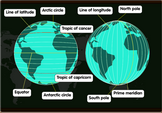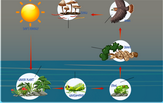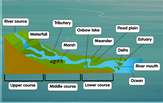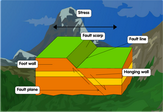Waterfall diagram geography
A waterfall is a mesmerizing sight to witness if you happen to be hiking on a mountain. These wonders of nature transport water from a river into the section flowing below to begin its downstream journey to the sea.
The creation of a waterfall is primarily reliant on the composition of the rocks underneath it. Waterfalls form from the erosion of the underlying materials by the flow of the river above. Softer rock materials, like mudstone or limestone, wear away much faster than harder rocks like granite.
Occasionally, a band of hard material can lie above softer rocks. The river erodes the soft part much more quickly, causing a depression to form which undercuts the hard rock. Over thousands of years, water may plummet from the overhanging cliff of hard rock into the plunge pool below.
After more time has passed, the erosion may also weaken the material underneath the hard rock layer to the point where the cliff collapses. This causes the waterfall to recede, or move back, where the process continues anew.
Consult this waterfall diagram – geography for a convenient reference on how layers of different rocks can contribute to the formation of a waterfall along a river’s path.











